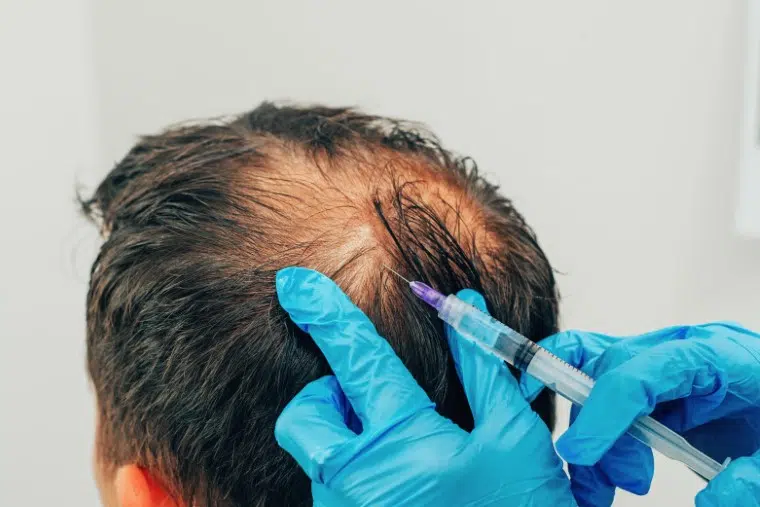Hair loss is a common problem that affects millions of people worldwide. Whether caused by genetics, stress, or medical conditions, losing hair can be distressing. Over the years, various treatments have been developed to combat hair loss, ranging from over-the-counter solutions to surgical procedures. However, a new and innovative treatment has been gaining popularity—Platelet-Rich Plasma (PRP) therapy.
In this article, we will explore the differences between PRP therapy and traditional hair loss treatments. We will also discuss why more people are choosing plasma therapy as their preferred solution for hair regrowth.
Understanding Hair Loss
Before diving into treatments, it is essential to understand what causes hair loss. Some of the most common reasons include:
Genetics – Hereditary hair loss, also known as androgenic alopecia, is the most common cause of baldness.
Hormonal Changes – Conditions such as pregnancy, menopause, and thyroid disorders can lead to hair thinning.
Medical Conditions – Diseases like alopecia areata, scalp infections, and certain medications can result in hair loss.
Lifestyle Factors – Poor diet, stress, and excessive hairstyling can contribute to hair fall.
Now that we understand the causes, let’s compare PRP therapy with traditional hair loss treatments.
Traditional Hair Loss Treatments
For years, people have relied on various treatments to combat hair loss. These include:
1. Medications
There are two FDA-approved medications for hair loss:
Minoxidil (Rogaine) – A topical treatment applied to the scalp to promote hair regrowth.
Finasteride (Propecia) – An oral medication that blocks the hormone responsible for hair loss.
While effective, these medications come with drawbacks. Minoxidil requires continuous use, and stopping it can cause hair loss to return. Finasteride, on the other hand, may cause side effects like sexual dysfunction.
2. Hair Transplants
Hair transplant surgery involves moving hair follicles from one part of the scalp to another. There are two main types:
Follicular Unit Transplantation (FUT) – A strip of scalp is removed and transplanted.
Follicular Unit Extraction (FUE) – Individual hair follicles are extracted and implanted.
While effective, hair transplants are expensive, invasive, and require a long recovery period.
3. Laser Therapy
Low-level laser therapy (LLLT) is another non-invasive treatment that stimulates hair growth. However, results vary, and it requires long-term commitment.
What is PRP Therapy?
PRP therapy is a revolutionary hair loss treatment that uses the patient’s own blood to stimulate hair growth. The process involves:
Drawing Blood – A small amount of blood is taken from the patient.
Processing the Blood – The blood is spun in a centrifuge to separate the platelet-rich plasma.
Injecting PRP into the Scalp – The plasma, rich in growth factors, is injected into the scalp to promote hair growth.
Benefits of PRP Therapy Over Traditional Treatments
Many people are choosing PRP therapy over traditional methods due to its numerous benefits:
1. Natural and Safe
PRP therapy uses the patient’s own blood, reducing the risk of allergic reactions or side effects.
2. Minimally Invasive
Unlike hair transplant surgery, PRP therapy involves only injections, making it a non-surgical and pain-free procedure.
3. No Need for Daily Medication
Unlike minoxidil and finasteride, PRP therapy does not require daily application or oral intake.
4. Long-Lasting Results
PRP therapy stimulates natural hair regrowth, and with proper maintenance, results can last for a long time.
5. Short Recovery Time
Patients can resume their daily activities immediately after the procedure.
How Effective is PRP Therapy?
Several studies have shown that PRP therapy is effective in promoting hair regrowth. Patients experience thicker, healthier hair after a few sessions. However, results may vary based on individual conditions.
Who is a Good Candidate for PRP Therapy?
PRP therapy works best for individuals who:
Are experiencing early stages of hair loss.
Have thinning hair but still have active hair follicles.
Want a non-surgical solution for hair regrowth.
Those with complete baldness or severe scalp conditions may not see significant results.
Are There Any Side Effects?
PRP therapy is generally safe, but some minor side effects may include:
Mild pain or discomfort at the injection site.
Temporary redness or swelling.
Slight bruising, which fades within a few days.
Since PRP uses the patient’s own blood, the chances of severe reactions are minimal.
Cost Comparison: PRP vs. Traditional Treatments
Minoxidil & Finasteride – Cost-effective but require lifelong use.
Hair Transplant – Expensive, costing thousands of dollars.
PRP Therapy – Mid-range cost, but offers long-term benefits without daily maintenance.
While PRP therapy may seem costly at first, it proves to be cost-effective in the long run due to its lasting effects.
Conclusion
When comparing PRP therapy with traditional hair loss treatments, it is clear why more people are choosing plasma therapy. It is safe, natural, and effective, with minimal side effects. While traditional treatments like minoxidil, finasteride, and hair transplants have their place, PRP therapy provides a non-invasive alternative that many find appealing.
If you are struggling with hair loss, PRP therapy could be the right solution for you. Consult a specialist to determine if this innovative treatment can help you regain your confidence and achieve healthier hair.

